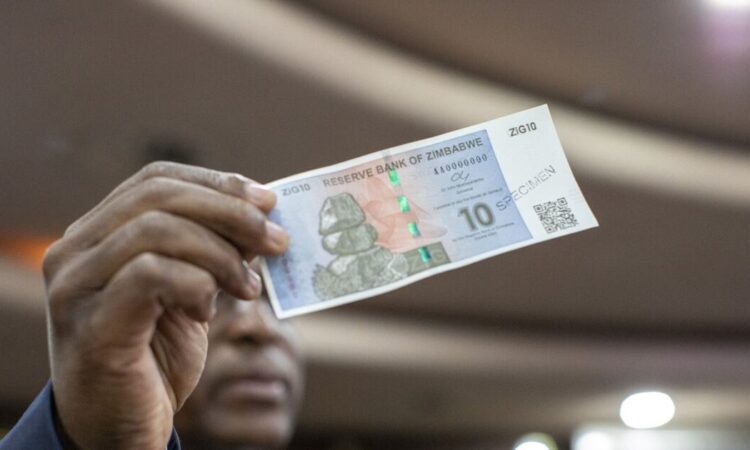
(Bloomberg) — Zimbabwe’s sixth attempt in 15 years to establish a national currency is already running into trouble.
The ZiG, short for Zimbabwe Gold, was launched in April to replace the crumbling Zimbabwean Dollar, and was backed up by gold and foreign currency reserves.
However, deep skepticism of the new currency as a reliable store of value has hampered its adoption.
On Sept. 27, the government devalued the ZiG by 43%. The move revived painful memories of past currency turmoil in which many Zimbabweans lost their life savings.
The government needs the ZiG to find a stable level if it’s to eventually replace the US dollar as the country’s dominant currency.
Why are Zimbabwean currencies always so unstable?
The southern African country has suffered a succession of economic crises, the near-collapse of government services, runaway inflation and widespread poverty and unemployment. Previous attempts to resuscitate a local currency have failed largely because the cash-strapped government resorted to printing money to fund the budget.
Central bank Governor John Mushayavanhu has repeatedly promised that this mistake will not be repeated on his watch.
What went wrong with the Zimbabwean dollar?
Previous attempts to reintroduce a national currency were sunk by hyperinflation that at one point crossed 500 billion percent, according to the International Monetary Fund.
Without a domestic currency, a government lacks important levers for managing the economy, from setting interest rates to managing the money supply.
The Zimbabwean dollar was brought back to life in 2019 after a decade-long furlough. Its value slumped by 80% between the start of 2024 and April 5, when newly appointed bank Governor Mushayavanhu put it out of its misery.
At that point, more than four-fifths of the southern African nation’s economic activity was being transacted in US dollars, with some businesses only accepting payment in greenbacks.
In the end, it proved impossible to dispel the public mistrust in the Zimbabwean dollar that has lingered since 2008, when people’s savings were wiped out by galloping inflation.
Enter the ZiG
The ZiG started trading on April 8 at an exchange rate of 13.56 to the dollar, with an international currency code registered as ZWG. Banks, mobile-money platforms, retailers and other intermediaries gradually reconfigured their systems to take account of the new currency. Holders of Zimbabwe dollar accounts had their balances converted to ZiG. The change affected share prices on the Zimbabwe Stock Exchange, which rebased its 56 listed securities.
Where does the ZiG’s value come from?
The central bank said the ZiG would be fully backed by $100 million in cash and 2,522 kilograms of gold worth $185 million. New banknotes were released on April 30, and the central bank went on a publicity drive to raise awareness of the new unit. To foster demand, Zimbabwe has made it mandatory for companies to settle at least half of their quarterly tax obligations using the new unit.
Is it working?
At first, official statistics suggested the ZiG had helped to rein in surging price pressures.
The authorities leaned on Zimbabweans to use the ZiG by ordering government services to be paid for in the unit, in addition to the tax requirement. They also fined traders for refusing to accept payment in ZiG.
The authorities said on Aug. 21 that dollar-denominated transactions had declined to around 60% of the total from 85% when the ZiG was introduced. The cabinet has adopted what it calls a “dedollarization roadmap,” and President Emmerson Mnangagwa has hinted the US currency could be removed as legal tender in Zimbabwe as early as 2026.
However, the ZiG’s value on the unofficial market has come under strain more recently amid rising food inflation. An El Nino-induced drought hit crops in the region, and lower commodity prices hurt dollar earnings for Zimbabwe’s mineral exports.
Consumer prices rose 5.8% in September, up from a 1.4% month-on-month rise in August.
©2024 Bloomberg L.P.
